Finding Your Product Mentors by Hinge CPO

Michelle Parsons is the Chief Product Officer at Hinge. Michelle has always followed her passion for helping people, which is what led her to Product. In this episode, Michelle talks about essential PM traits like curiosity and relationship building, how to get the most out of being both a product mentor and mentee, and how to build empowered product teams.

You are very active in the product community, and it’s time to learn more about your own experience growing as a leader. So let’s start from the very beginning. How did you get your first PM job?
Before my first PM job, I didn’t even really know that product was an option for a career. Going back to my undergrad years, I was pre-med, I was pretty straight and narrow on that path. And it was my senior year of college that I was kind of having an existential crisis. You know, should I actually go down this pathway and invest a lot more time and money into this field that I wasn’t as passionate about anymore.
I still wanted to really help people, but having spent so many years in the summers working in hospitals and with doctors, I started to get a bit jaded. There were some pretty big foundational problems with the healthcare system that really expanded beyond healthcare, into education and access and other things of that nature. And so I took a step back and I said, well, you know, I’m not sure that I want to necessarily go into medical school now. So let me see, what else is out there? What else can I do?
I ended up joining Teach for America and I ended up teaching high school science. I know science really well, I was an Education minor, and so I said, why don’t I take this pathway in? And if I noticed that a foundational problem to medical care and access is education, how do I help really teach the next generation of kids? And so I spent two years in the classroom really starting to realize that, wow, there are a lot of gaps here as well.
I’m from South Texas, so I was very aware of underfunded, underserved communities. I grew up in one. I’m from a single mom household myself, and I was very much in my worldview. And so I started realizing, Hey, I don’t have the tools or the resources to actually move my students in the direction that we’re supposed to be going. So I ended up having to just leverage a lot of things that I created.
I started searching online. What tools can I use? What exercises can I download? How do I incorporate technology into my classroom since I don’t actually have textbooks for every single one of my students? It was then that I started realizing, Okay, well, now that I have these resources I’m constantly going online for, how do I actually track and measure whether the things that I’m teaching are actually having the outcomes that I think they’re having?
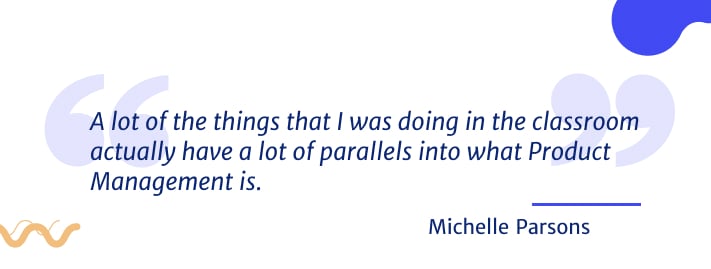
And so I started leveraging basically an Excel tracker. One of the things I think that Teach for America really instills is backward planning, objective focus, decision making, and education, really. So I built a tracker. I put every single objective into this Excel tracker with all of my students, aligned every single lesson in question that I was teaching to these, and would weekly look back, and say, All right, are my kids actually making progress and movement in this area? If so, awesome, which ones aren’t, how do I pair these two together? If all my students are not succeeding in this one area, let me like go back and reflect. Maybe it was something that I did, maybe it was a way in which I was teaching that in that particular day or that objective.
I asked questions about all of these little things. How do you organize a classroom? How do you motivate a classroom and kids to do their work and be engaged and be excited? There were all kinds of little moments where I was like, Oh, I like this, and I like that. And really when I reflect on Product now, a lot of the things that I was doing in that classroom actually have a lot of parallels into what Product Management is. So it was then right after I was teaching, I was determining What’s my next move? What do I wanna do next? And I found ed tech and I said, Hey, this seems like a way to increase my scale, increase my reach beyond just a class of 160 kids.
So I joined a small ed-tech startup called Alleyoop that was an incubator startup within Pearson Education, that big publisher. And so it was a really great way for me to get my first exposure to Product. I really started as a content metadata analyst, and so not necessarily on Product. But given that we only had 30 people in the whole company, you’re very much able to kind of reach your hand into various aspects of, Hey, this needs to get done and who’s willing to pick it up?
So basically you’ve been doing Product Management even before they get you the title.
Yeah, absolutely, in certain aspects. Definitely not the full Product Manager job, but things around it. Customer interviews, SWOT analysis, working with data scientists and data to uncover different patterns. Always around it. And it wasn’t until my next role after that startup that I was really able to dig in and start working directly with engineers and solving my own areas
Your story is inspiring because you follow your passion to help people. To healthcare first, then education, now technology, but always finding ways to connect your skills with your user. And it sends a powerful message that there are many ways into product.
I appreciate that, and I think that’s spot on. There’s no one clear path into Product Management. And as the field and as the industry has really taken off and more and more people become interested in it, I think there are some avenues now that you can put yourself into to gain that experience more quickly, but I definitely have heard a lot of interesting stories.
I was talking to Ravi Mehta, who’s the former or CPO of Tinder, who said he showed to Microsoft one day thinking he was doing a software engineering interview, and he ended up in a Product Manager interview. And it was just totally by accident that this happened. But that kind of set his career off in Product. There are many unique stories for how people can get into Product, for sure.
In your professional career, and you’ve worked at other amazing companies, such as Kayak, Spotify, Netflix. Now you’re the CPO at Hinge. And it happened in a relatively short period of time. How were you able to grow so fast in your career?
It’s always a question I get asked, like, how did you do this? Look, I think there’s a couple of things. I don’t wanna downplay the role of mentorship, and advisors, and people in my life around me who have really helped me when I have questions, and when I come with ideas to really support and enable.
As I mentioned, I’m from a single mom household. I’m the first person in my family to go to college. And I really had to advocate for myself. I had to have the gumption to go out there and just knock on doors. Well, figuratively, not literally, but reach out to people and try and get advice for, Hey, this is what I’m thinking I want to do. How should I go about it? Or here’s how I’m thinking of going about things. How have you done it before?
And I think that all of those things have equipped me with the baseline skills of just asking a lot of questions. What makes a successful Product Manager and Product Leader is you have a lot of curiosity tied in with the ability to actually execute on that, to take in all those different pieces of information and then transform that into a plan and a vision and then execute upon it.
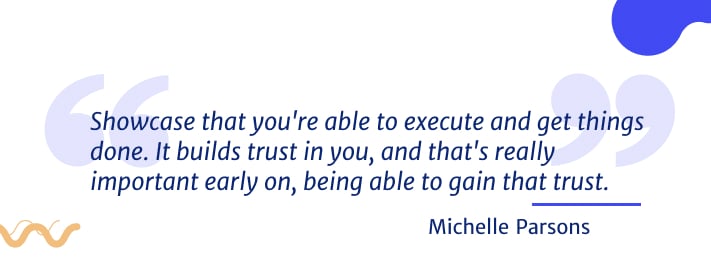
The other piece of Product that I really love and gravitated toward was the balance of art and science. As somebody who is infinitely curious and always daydreaming and always thinking about the what-ifs and the problems to solve, I tend to be very practical and pragmatic in my approaches to things. How do I take controlled risk and not go wild? But my science background, coupled with just the insatiable urge to ask a lot of questions and then take all that input and then go put it into action, has definitely helped me in my career. Especially early on when you really need a showcase that you’re able to execute and get things done. It builds trust in you, and I think that’s really important early on is being able to gain that trust.
Looking for help shows curiosity, but also a certain level of vulnerability to say that you are here to learn. And that also creates a deeper connection. What do you recommend to help people find a mentor or group of mentors?
Yeah, absolutely. There’s no one, you know, stop shop or one way to find mentors. There are a lot of programs out there, so I think that’s one. You can go into a variety of different, already-established paths into finding mentors, finding advisors. Those are more restrictive though because there’s a lot of people applying into those pathways.
So one of the things that I did is look for people within my organization. So back when I was in that startup, we were nestled within the larger Pearson Education organization. So I just started looking at people who were in leadership or in roles maybe one or two steps above me and saying, Well, these people seem to be in areas that I wanna gain some knowledge and skills in. Can I set up a meeting with them? With very specific questions that I wanted to get to know or learn about.
But also I think the key thing that really opened up the door for me with those individuals is that I had a very established agenda. Here’s what I wanna learn. Here’s what I’m interested in doing. Here’s how I’m gonna apply it. Which I think is really critical when you’re dealing with, how do you get someone to spend their time on someone they don’t know? They actually wanna know that you’re gonna take this insight and go apply it in some way. But then I would follow up, right? Thank you for your time. And here’s how I took all this information. And here’s what I did with it here was the outcome of that.

Because I think it really showed people that I was listening and, wow, if they invested their time in me, that could pay dividends. Maybe not for them as individuals, but for the things that I could then go do and go impact. And so that to me is really critical. Even when people come to me for advice or mentorship, I really am looking for: Is this time well spent? Is this person coming prepared? Are they coming with questions? Are they coming with ways that they’re going to apply this? And then what’s that follow-up look like, because follow-up is actually the hardest part of all of this. Once you’ve gotten that, do you maintain that relationship? And do you add value back and forth across the table?
And now that you are a Chief Product Officer and I’m sure you’re also mentoring other people. How do you go about picking the right mentees?
When a person comes with an ask or request with some questions, the first thing to consider is, am I actually able to help? Do I have the skillset and the background and the experiences to add meaningful value here? Or do I know somebody else in my network who is maybe better equipped to help in this space? There might be things that I am stronger in, and things that I’m not strong in.
Actually just having picked up this role here, I realized I actually haven’t done a lot of pure monetization work. I spent my career in consumer and search discovery. Very much frontend-facing core experience type of roles. And I was trying to get a handle on the whole world of monetization and how that works. I’m like, wow, I really don’t know anything. So I have to go out there now and look for people who can actually help answer my questions and guide me.
So it never stops. I’m looking for people who have that spark and who are able to articulate very clearly what they’re looking for and what their plans and goals are. That to me is of critical importance. I think my mind is just wired that way. Like, what’s your outcome? What are you doing? Or what are the areas you think you need to grow or develop in, or where you’re struggling. And then I can discreetly pick where I can actually add value. If it’s just a really big amorphous, “I’d love to get into Product,” that’s really hard for me to work with. Cause I don’t know where you’re starting, or what areas you need to level up or refine in.
And it’s good to recognize how the mentor role can change. Maybe someone was really helpful for you at some point in your career. Now you’re at a different stage and you want to find a different type of help, or a different mentor, and that’s okay. It’s part of lifelong learning.
That’s exactly spot on. And oftentimes those people in your network or in your sphere can oftentimes recommend other people. And that’s been the case with me. I’ve recently had to dig in a little bit more around internationalization, how do we do that? And there are people who are in my network who have introduced me to other people who have been invaluable. So I think that that’s really important to continue to develop and build in those relationships, for sure.
For people who are not in the dating market and are not aware of Hinge, what does your product do?
Hinge is a mobile dating app. We are kind of in the same sphere as Tinder, and Bumble, and the other apps that are out there. Our goal is really to drive meaningful connection. What sets us apart from other apps is our mission, our goal, and our vision really is to be the dating app designed to be deleted. And that might just seem like a catchy tagline on the surface, but we really live, breathe, and act with that motto in mind, with that tagline in mind. What does it mean to be designed to be deleted? Well, that really predicates that we have ways to measure what deletion means, and positively. So we wanna that we are getting our users out on well-intentioned, great dates.
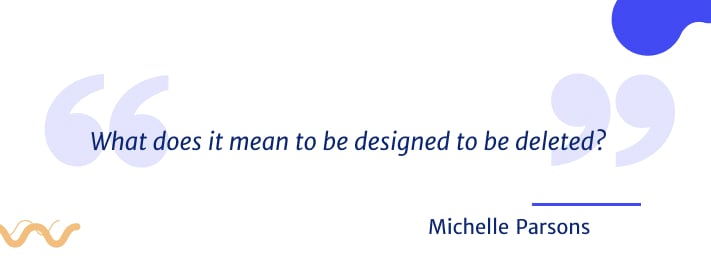
Purposefully, our onboarding flow is much longer than our competitors. We purposely don’t have a swipe mechanism that is, very popular in other apps. We really make sure that you’re taking time to get to know the person on the other side of that profile so that by the time that you do hit yes or no, you’re excited about potentially getting to meet that person.
We’ve been growing exponentially and we’re very excited about kind of our trajectory. Especially with the pandemic, and everything that we’ve been going through as society in the past…two years almost—it’s crazy to even say that. People are looking for more authentic, more real ways to connect with each other, whether that be virtually or in person. And I think that we just have so much opportunity in this area to continue to press on that particular piece.
Think about 10 years ago in the era of Facebook and Instagram and just continuing filters, curation, and the facade almost. We’ve gotten really accustomed to that. And the past two years have jolted us to say, Wait a minute. I’m not okay always, and my life is not perfect. And it’s finally become okay to say that. And I think what we’re trying to do, and what I’m really excited about is, Hinge is really well-positioned to own that intentioned space, where we make it okay for you to just express your authentic self and not this curated set of six photos. So that’s what we’re doing right now. And I’m very excited about our future here.
And how did your roadmap change during the pandemic?
So I actually joined remotely. I was a fully remote employee having to figure out everybody in this whole organization, and what we were doing, and how we were working. And really the team had doubled in size during the pandemic, which is pretty phenomenal if you ask me. And still really maintained its core fabric, its core culture, which I found just inspiring and impressive.
The roadmap changed in that, our goal is to get people out on in-person dates and that came to a halt. And so we really quickly had to pivot and figure out, Okay, well, what can we do to still ensure that people are connecting? No one wants to sit on text forever. So we really quickly had to integrate video and audio as a core foundation in our app.
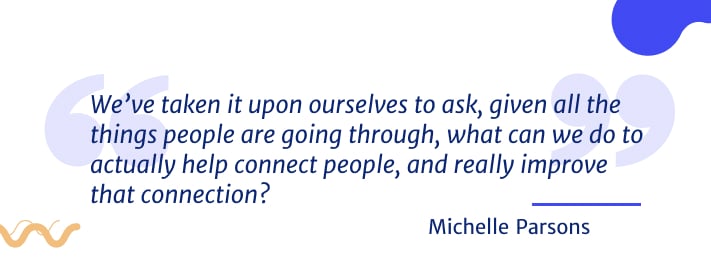
And then through that, we are also just learning a lot about what people are looking for, how hard it is to make connection, especially when you don’t have really any other avenues outside of your close friend group or family. Since the pandemic has closed down a lot of those avenues that otherwise used to be available. So we’ve now taken it upon ourselves to say, Okay, well, given this and given all the things people are going through, what can we do to actually help not just connect people, but really improve connection? And so we’re really focusing on a lot of these types of concepts and opportunities. More authenticity, more accountability. How do we do that?
Hinge is part of a portfolio of companies, Match Group. And most are also in the online dating space. As a CPO, how do you make sure that you’re delivering a unique experience for your user persona while maintaining certain consistency across the entire portfolio of companies?
I don’t know if consistency really is the goal here. That was one of the things that when I first joined Hinge and I started learning about the acquisition that happened in 2019. So it hasn’t been that long, it’s fairly recent for all intents and purposes. I know three years now can feel like a lifetime. But the goal really is for every single app to have their own unique value prop, their own unique audience, the thing that they’re really trying to deliver on.
For Hinge, our goal, and our audience is coming to us for intentioned dating. To find a relationship. Every app has their own spin on what their user coming for. Bumble is women make the first move. Tinder is more recency, more active, quick connections. We maintain our uniqueness and our goals by focusing on our users.
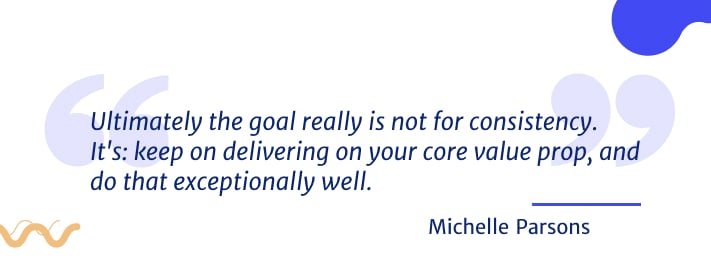
The benefit though, that I’ve actually seen and experienced firsthand is I’m able to just ask other people in other parts of our brand, How are you solving this problem? How are you thinking about X, Y, and Z? And able to share insights. And of course we have different audiences and different end goals. And so every insight might not be as relevant in that same context, but it’s another data point that I can use, that my team can use to make more informed decisions. That’s one been one of the benefits. But ultimately the goal really is not for consistency. It’s: keep on delivering on your core value prop, and do that exceptionally well.
So your goal is not for people to now to go to other apps, even within the same group. Right?
Sure. Our users can really change depending on the day, their experience from last week, and what they’re looking for. There’s some data out there floating around, that generally people are on two or more dating apps. And so that is common behavior. I guess the question is like, What’s your primary app? What are you primarily engaging with and looking for? And so again, what we just try and do is deliver on our core value prop, ensure that every decision that we’re making from Product, to design, to engineering, is all laddering back up to that core mission, which is: we want our dating app to be designed to be deleted.
And so we wanna make sure that everything that we’re building, every decision that we’re making ladders back up to that, so that we build user trust and deliver on that promise for our users. I tend to use the traditional Jobs to be Done. And if our users are coming to us for our relationship and for meaningful connection, what can we do to deliver on that?
And that guides us, like, Where are we failing at that today? And that will also help us uncover really unique opportunities that we might not be focused on otherwise if we’re constantly chasing competitors, or constantly trying to integrate this or that or that new technology. There are things popping up all over the place every single day. But again, if you are true to what you’re trying to deliver and your users and your customers see that, they’ll build that trust, they’ll build up that rapport with you and they’ll come back. So we’re just trying to continue to do that.
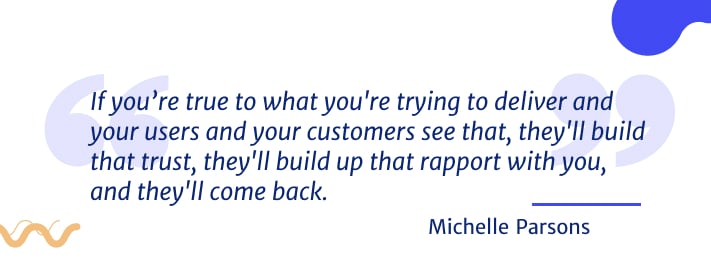
Love that clarity. Because it’s so easy as you grow to lose focus on what brought you there. Looking inside your own organization, how do you structure your own Product Team?
Yeah, that’s a great question. Organizational strategy and structure is not an easy thing. It’s actually one of the things you constantly spend a lot of time evaluating and thinking about. Honestly, in my own role that’s where I spend a lot of my time. Are we set up the right ways? Do we have the right tools? Do we have the right processes and throughputs? Our organization is structured in that—and I took a lot of my experiences from Kayak and Spotify and Netflix and kind of said, What do I like and not like about each of these structures and how might that then be applied to Hinge? And one of the things that really resonates with me is, I really want to ensure that we create teams that feel fully empowered to come up with the ideas that they think are the most important to leverage and lean into the insights, take all of that, and then work collaboratively with their team without a lot of hierarchy, top-down leadership delivering on what your objectives are or what OKRs you need to go hit.
I really try to structure the teams with a lot of scope and autonomy. What that means is that you’re not oriented around a specific surface or a button, or a particular feature. I really try to organize around outcomes. What are we trying to deliver? And what do we think are the really important big opportunities, or big outcomes, and big bets that we want to continue to invest in, both from a product perspective and from an organization perspective? And then form teams around that. Of course the objectives, and OKRs, and problems they might be focused on could iterate and change as more data and more insights come in, but really their purview is to solve things around profile innovation and really understand, How do we bring people to life?
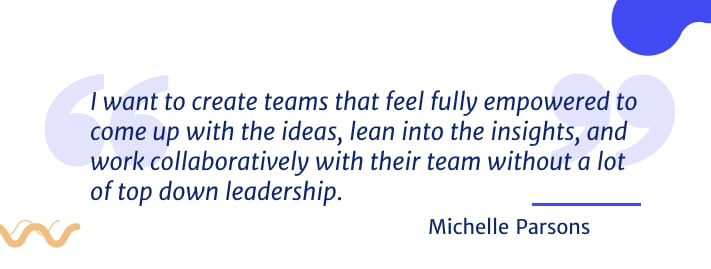
And at the core of that, there are so many different ways you can bring people to life. What does that mean? But you have one person who’s able to lead that through and through, and really feel empowered to create a long-term vision, a long-term roadmap around that. Versus here’s a feature. Well, what happens if that feature ever hits its lifetime? Then you’re gonna have to figure out, well, where do you put that team, that person?
So structurally, I really try to empower the team. I take something from previous organizations where we treat the PM as the informed captain. You are both responsible for the direction of your ship, but also ensuring that everyone’s working together and everyone understands where you’re going. That’s really the organization there.
And then, one of the things that has always irked me is bringing people into an organization and you don’t have any staffing for them. That is something I’ve experienced before personally. And it is really hard as a Product Manager to get your job done when you don’t have staffing. When you don’t have support, when you don’t have partnerships around you that can help you execute on that vision, those objectives. So that’s the other thing, is really ensuring that before we bring on new people or open up new areas of opportunity, that we have a plan for how we’re gonna fund those. Because there’s nothing worse than being onboarded into an organization and then just sitting there trying to beg, borrow, and steal to get into somebody else’s roadmap.
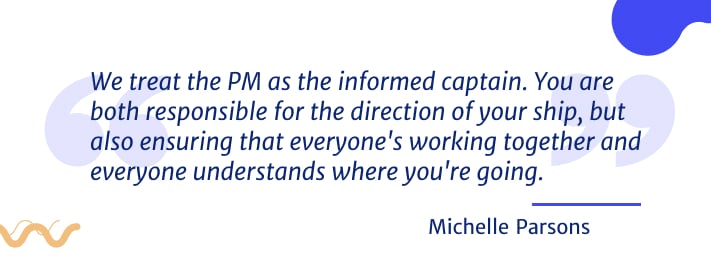
It’s always interesting to learn about team structure and see how it changes, because whatever is working for you today might not be the same in six to twelve months from now.
Absolutely. We’re already going through this again. So as you look for 2022, we’re gonna keep on growing, keep on scaling. How do we need to reorganize? It becomes less about the individual team, then. It becomes about the cross-team groups, the cross-team organization. How do we start to get information across to marketing, to our support teams, to brand, et cetera? And how do all of the teams work together? What processes and principles do we have in place? And so that’s what we’ve been spending a lot of time on now. Do we have the right visibility? Do we have the right communication tools to really unlock and enable us to do our best work?
Michelle, it’s been a pleasure to learn from you. Is there anything else you’d like to add?
No, but this has been a phenomenal conversation. And people can feel free to link with me on LinkedIn, and I’m always available for questions or thought starters. I love Product. I think that that’s my biggest takeaway from my career. I really just love to dig in with people and solve problems. And it’s been really fun to be able to do product at a variety of different companies, all serving that direct-end consumer. It’s really where I drive my passion from.
